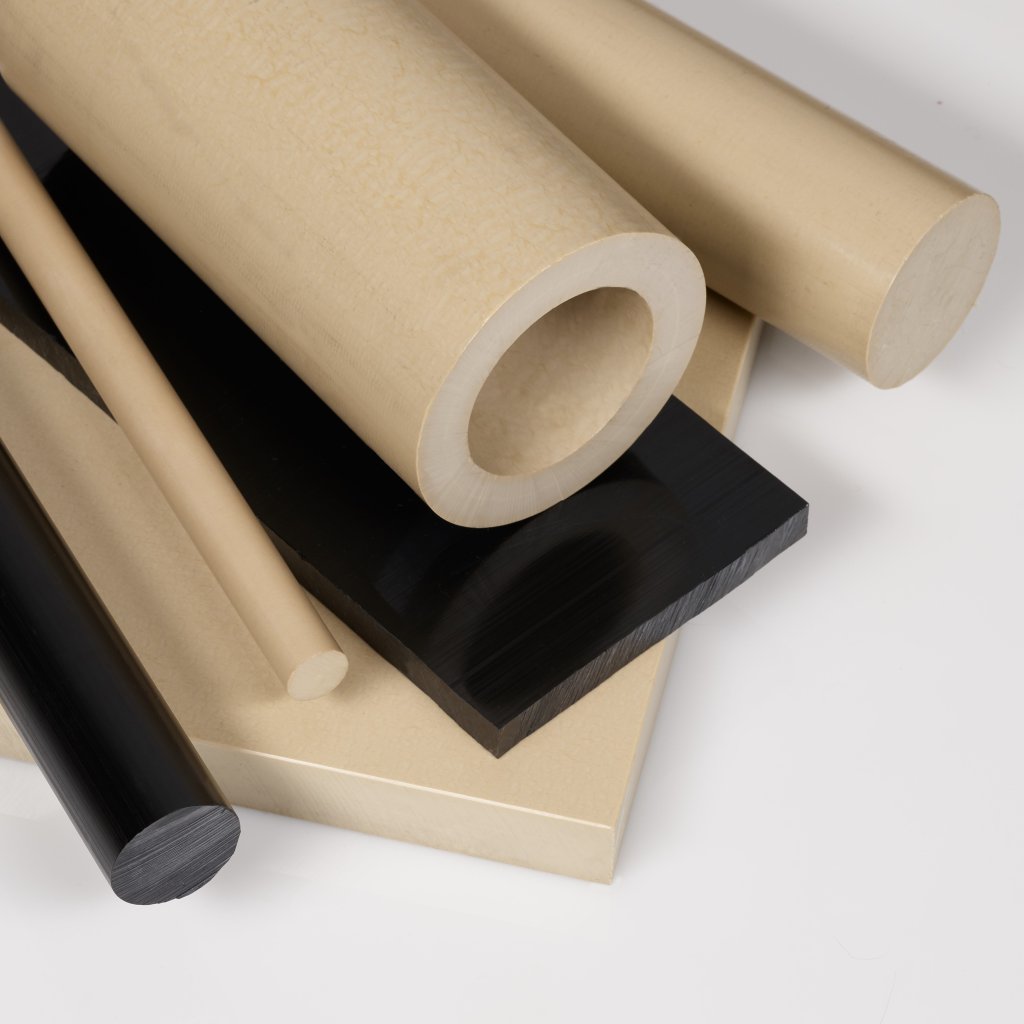PEEK, more formally known as polyetheretherketone, is a high-performance engineering thermoplastic with unique characteristics. This rigid substance belongs to the polyketone family of polymers and is one of the most extensively utilized and usually produced in large-scale quantities.
Advantages of PEEK Plastic
PEEK is a highly-machinable semi-crystalline thermoplastic that has excellent heat resistance, mechanical strength, and chemical resistance. In addition, its polymer structure allows for exceptional environmental resistance, dimensional stability, and mechanical strength.
Some of the main benefits of PEEK include:
- Strong and rigid with a high shatter resistance rating
- Can be easily machined with diamond-filmed, polycrystalline diamond (PCD), or polished carbide tooling
- Excellent resistance to seawater, solvents, chemicals, hydrolysis, and many other submerged environments
- Can be exposed to prolonged temperatures of around 480°F (250°C). Exposure to even higher temperatures in steam or high-pressure environments will not negatively affect its rigidity.
- Has a melting point of about 650°F (343°C)
- Extremely low toxicity and gas emission when exposed to open flames. Safe for many high-temperature environments
- Creep-resistant, even at high temperatures
- Suitable for use in ultra-high vacuum pumps
- Suitable for extremely harsh environments, making it an excellent high-strength alternative to fluoropolymers
- It can be autoclaved for increased sanitation and medical applications.
- Dissolves very slowly when exposed to concentrated acid solutions, such as high molarity nitric and sulfuric acids
- When glass or carbon-fiber fillers are added, it enjoys enhanced physical properties, such as higher thermal stability and greater mechanical strength.
- PEEK is both durable and resistant to wear. It has an impressively-long lifetime, even in hostile environments and prolonged wear applications.
- Resistant to high-energy radiation
- Low moisture absorption
- Inherently flame-retardant
Finally, PEEK is exceptionally resistant to biodegradation. Many of the features listed above help explain why. Unless it’s being actively recycled or disposed of, parts, products, and implants made from PEEK can be relied on to last an extremely long time.
Common Uses For PEEK
PEEK comes in many types and grades, some of which lend themselves to specific purposes more than others. Because PEEK’s physical properties allow it to be used in a wide variety of industries, parts made from PEEK include bearings, piston parts, aerospace materials, medical prostheses, and many others, with the total number of applications growing every year.
Thanks to the many benefits PEEK enjoys, it has become the first choice of material for many challenging environments. Industries that take advantage of PEEK include medical, oil and gas, aerospace, food and beverage, and more.
Common parts and products PEEK is used for include:
- Bearings and bushings
- Automotive parts
- Semiconductor machinery
- Seals
- Food processing equipment
- Piston parts, pumps
- HPLC columns
- Compressor plate valves
- Cable insulation
- Medical prosthetics and implants
- Vacuums and valves
- Safety gears
- Dental instruments
- Thermometers
- Dialyzers
- Endoscopes
- Safety guards
- Sterile boxes
- Mobile phones
- Refrigerators
- Washing machines
- Air conditioners
- Computers
- Wearable electronics
The impressive number of applications for PEEK continues to increase.
PEEK vs. PEK vs. PTFE
When presented with a need for a material able to withstand harsh, high-temperature environments, the best choices usually come down to PEEK, PEK, and PTFE.
We already know that PEEK performs as a robust semi-crystalline thermoplastic with high resistances to many demanding environmental factors.
PEK (polyether ketone) is a ketone-based, semi-crystalline, high-performance thermoplastic with excellent thermal dimensional stability, low flammability, strong chemical resistance, and mechanical qualities over a wide temperature range. It maintains nearly consistent mechanical and physical attributes at temperatures up to 30 degrees hotter than standard PEEK. Combined with solid creep and fatigue resistance, these characteristics give it unique features not seen in most other polymers.
PTFE (polytetrafluoroethylene) belongs to the fluoropolymer family, and the presence of fluorine allows it to provide high electrical, chemical, and acid resistance. Compared to other polymers, its mechanical properties are lower, but its flexibility at low temperatures is considered a key feature. PTFE is stable at temperatures up to 500˚F (260˚C)
PTFE is often used in backup rings and specialty seals. It is also utilized for electrical insulation, isolation, and low friction bearing components. In addition, high purity grades of PTFE are often used in fluid handling systems in the semiconductor industry.
PEEK Plastics at Piedmont
PEEK’s proven track record of performing well in harsh environments makes it an excellent and reliable choice for many applications and industries.
Piedmont Plastics offers a variety of specifications, and you can request to have your PEEK order cut to size and machined into whatever fabricated parts you need to meet the requirements of your manufacturing project.
Contact our materials experts today for more information.
